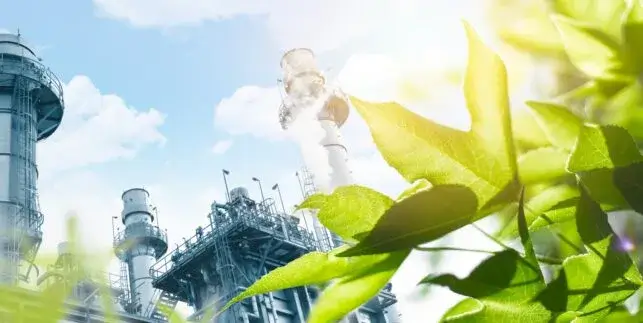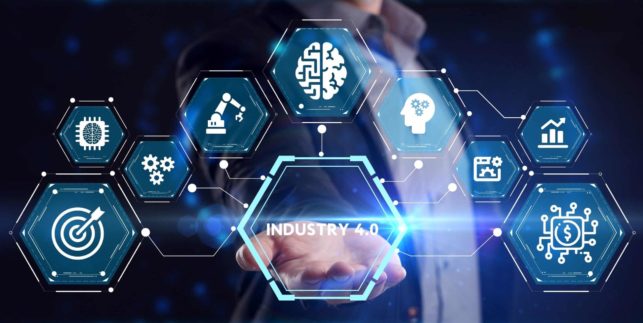How Did Sustainable Manufacturing Get to Where It Is Today?

Sustainable manufacturing is something just about everyone in the industry is moving toward, with 71.9% of American manufacturers already having a sustainability policy in place. This commitment to sustainability makes it possible for manufacturers to have a positive environmental and social impact, building a better future for everyone. But how exactly did this commitment to sustainability arise, and why are so many manufacturers coming on board today?
Where Did the Modern Idea of Sustainability Come From?
Nothing in the industry happens overnight. The idea of sustainability has had a long journey to arrive where it is today, driven by an increasing understanding of how resource use, waste, and pollution affect the world around us and everyone in it.
Before the industrial revolution, people didn’t really have the capacity to cause a large-scale impact on the environment. However, the invention of steam power, increased use of coal, and other developments changed that. The earliest understanding of just how big of an impact industrialization can have developed in the late 1800s, when the first national parks were designated for preservation.
It soon became clear that the use of land wasn’t the only thing to worry about. Further advances started to build the connection between industry and the impact of air and water pollution. The landmark amendments to the Clean Air Act in 1970 and the establishment of the Environmental Protection Agency marked a shift in how sustainability in industry is to be managed.
Building on this foundation, governments, and industries around the world have made further strides toward sustainability. The major topic today is climate change, which is being addressed through the Paris Climate Accords and the many nations making progress toward reaching net-zero emissions by 2050.
What Makes Manufacturers Choose Sustainability Today?
While various agreements and treaties set ambitious targets at the highest level, the actual work of attaining sustainable manufacturing happens on the factory floor. Today, manufacturers are making considerable efforts to cut their emissions, reduce waste, use natural resources more efficiently, and improve energy management.
Implementing these tasks is a challenging process and can require a major commitment from manufacturers. So why are they doing it in such significant numbers? Across the industry, there are a few key driving forces that have the majority of manufacturers choosing sustainability today.
1. Regulations
In many cases, manufacturers must make their operations more sustainable to meet regulatory requirements. Countries around the world are creating new regulations and tightening existing ones in order to meet their international commitments toward reduced emissions and other areas of sustainability.
For many manufacturers, this means either changing the way their factory floor operates or shutting down. Different regulations can vary widely in their consequences, with many being used to shut down non-compliant manufacturers. Even when fines and taxes are used instead, manufacturers can collapse under the financial burden.
In some cases, regulations create incentives for sustainability. Instead of penalizing non-compliant manufacturers, they provide tax breaks or other benefits to manufacturers going above and beyond. This is a common trend in renewable energy use, waste reduction, and circular economy development.
The changes that manufacturers must make to meet regulatory requirements can be incredibly significant. There isn’t just the need to change how their operations work but also the need to carefully measure and record the impact they’re having. Manufacturers need to be able to demonstrate that they’re meeting sustainability regulations to avoid the potential consequences of non-compliance.
2. Corporate Governance
Manufacturers depend on a wide network of buyers, suppliers, and partners to achieve production and sell their products. Without those connections, a manufacturer simply can’t run its operation. Each of those partners has its own corporate governance values and policies, and one of the main areas of focus today is sustainability.
As part of their commitment to sustainability, many companies will only work with manufacturers who meet certain standards. These could be regulatory standards set by the government or an even higher standard set by the company itself. In any case, manufacturers must meet those standards if they wish to retain access to buyers, suppliers, and partners.
This isn’t a minor niche, either. Research from McKinsey shows that almost 50% of companies are already evaluating partners based on sustainability and are monitoring their performance. Failing to implement sustainable manufacturing today cuts manufacturers off from a massive section of the market, and that could be the difference between thriving and going under.
3. Public Perception
Manufacturers also have to worry about the way the public sees their company. Sustainability is important among consumers today. While communicating the impact of sustainable practices to consumers is a challenge in itself, manufacturers can’t afford to develop a reputation for unsustainable manufacturing.
Consumers are now very aware of issues like climate change and plastics pollution and will incorporate that information into their purchasing habits. Manufacturers now have a clear incentive to make their products more sustainable in terms of both the products themselves and their packaging.
By meeting certain sustainability requirements, manufacturers are able to make specific claims about sustainability regarding their products. This can also include a variety of government and NGO environment and sustainability programs that highlight products that meet their requirements.
When making any claims about sustainability, manufacturers also need the numbers to back them up. That’s an important part of why manufacturers need a way to accurately track and monitor every aspect of production.
4. Integrity
It’s easy to look at sustainability and say that everyone should do everything they can to make it happen. However, the real world of manufacturing is complex, and moving toward sustainability isn’t always straightforward. Despite that, many manufacturers do implement sustainability beyond regulatory requirements due to the integrity and values of the individuals making those decisions.
The problems that sustainable manufacturing has set out to solve could have disastrous effects around the world in the coming years. Many of the executives and managers who decide how much sustainability is worth to their company understand this very well and accept the social responsibility to contribute to a better world.

Changing the way people work in factories
Request a DemoThe Future of Sustainable Manufacturing
The transition to sustainable manufacturing is already well underway, with manufacturers taking definite action to implement sustainability. The world is moving closer to the lofty goals it has set for emissions and other aspects of sustainability in the future.
Manufacturers will need to continue changing and improving their methods and seeking out new solutions to make sustainability happen.




